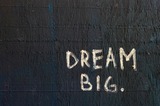
Attribution: College Matchpoint.
- Subject:
- Higher Education
- Material Type:
- Reading
- Author:
- Aujalee Moore
- Date Added:
- 05/20/2024

Attribution: College Matchpoint.
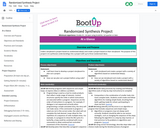
Coders storyboard a project based on randomized idea(s) and create a project based on their storyboard. The purpose of this project is to synthesize understandings into a project with up to three randomized ideas.
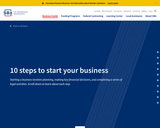
Starting a business involves planning, making key financial decisions, and completing a series of legal activities. Scroll down to learn about each step.

This is a lesson about teaching 1st unit vocabulary in 10th grade. It consists of a lesson plan and a list of 1st unit words.Bu ders ,10.sınıf 1.ünite kelimelerinin öğretimi ile ilgilidir. Bir ders planı ve 1.ünite kelime listesinden oluşmaktadır.
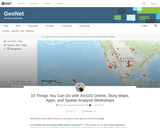
Several new content pieces invite you to do hands-on work with web GIS technology:
[1] 10 Things you can do with ArcGIS Online in education. These include: (1) Use web mapping applications. (2) Make your own map. (3) Get a school, club, or university organizational account in ArcGIS Online. (4) Use and modify existing curricular resources. (5) Explore the Living Atlas of the World. (6) Modify and ask questions of maps. (7) Conduct spatial analysis on mapped data. (8) Add multimedia to maps. (9) Explore your world in 3D, and (10) Map and analyze field-collected data.
[2] Introduction and Advanced Work with Story Maps: Slides and hands-on exercises. These include how to build a story map from a web map, and how to build map tours, map journals, swipe, series, and other types of story maps.
[3] Teaching with Web Apps. Set of resources and activities. These include examining Pacific typhoons in 3D, demographics of Zip Codes, creating viewsheds and buffers, and much more.
[4] Spatial Analysis in Human Geography. These include the 1854 cholera epidemic in London (activity), a Boulder County hazards analysis (map), and an examination of the Human Development Index around the world (map).
I created this content for the Esri mapping lab for the 2017 National Conference on Geography Education, but it can also be used to support your own professional development or for your own instruction.
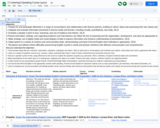
This Course Map draws on the work of Eric Dodson, Luciana Diniz, and Nanci Leiton in "Green Tea Intermediate English Communication" and Colleen Shields, Jen Sacklin, Maggie Mitteis, Dave Schenderlein, and Annick Todd in "LCC ESL College Transition Listening / Speaking." It includes a narrative overview, weekly objectives, and course objectives for each week as well as activities, scaffolding, deliverables, and feedback.
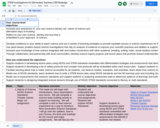
This 10-Week Course Map provides a narrative overview, weekly objective, and course objective as well as related materials and assessments. The map helps educators develop confidence in their ability to teach science and explains ways to use teaching strategies that provide equitable access to science experiences for K-6 students.
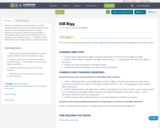
Students will explore multi-digit numbers and the relationship between ones, tens and hundreds; a digit in one place is 10x the digit in the place to its right. Students will use their bodies to represent digits in multi-digit numbers up to the hundredths place and compare these numbers using <, =, >. Students will use their bodies as multi-digit numbers to add and subtract.
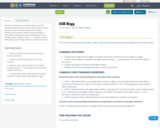
Students will explore multi-digit numbers and the relationship between ones, tens and hundreds; a digit in one place is 10x the digit in the place to its right. Students will use their bodies to represent digits in multi-digit numbers up to the hundredths place and compare these numbers using <, =, >. Students will use their bodies as multi-digit numbers to add and subtract.
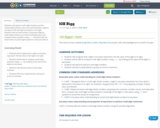
Students will explore multi-digit numbers and the relationship between ones, tens and hundreds; a digit in one place is 10x the digit in the place to its right. Students will use their bodies to represent digits in multi-digit numbers up to the hundredths place and compare these numbers using <, =, >. Students will use their bodies as multi-digit numbers to add and subtract.

Students will explore multi-digit numbers and the relationship between ones, tens and hundreds; a digit in one place is 10x the digit in the place to its right. Students will use their bodies to represent digits in multi-digit numbers up to the hundredths place and compare these numbers using <, =, >. Students will use their bodies as multi-digit numbers to add and subtract.

Students will explore multi-digit numbers and the relationship between ones, tens and hundreds; a digit in one place is 10x the digit in the place to its right. Students will use their bodies to represent digits in multi-digit numbers up to the hundredths place and compare these numbers using <, =, >. Students will use their bodies as multi-digit numbers to add and subtract.
Thanks
http://driverrestore.com/
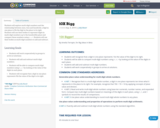
Students will explore multi-digit numbers and the relationship between ones, tens and hundreds; a digit in one place is 10x the digit in the place to its right. Students will use their bodies to represent digits in multi-digit numbers up to the hundredths place and compare these numbers using <, =, >. Students will use their bodies as multi-digit numbers to add and subtract.
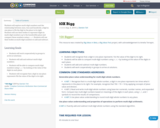
Students will explore multi-digit numbers and the relationship between ones, tens and hundreds; a digit in one place is 10x the digit in the place to its right. Students will use their bodies to represent digits in multi-digit numbers up to the hundredths place and compare these numbers using <, =, >. Students will use their bodies as multi-digit numbers to add and subtract.

Students will explore multi-digit numbers and the relationship between ones, tens and hundreds; a digit in one place is 10x the digit in the place to its right. Students will use their bodies to represent digits in multi-digit numbers up to the hundredths place and compare these numbers using <, =, >. Students will use their bodies as multi-digit numbers to add and subtract.
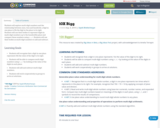
Students will explore multi-digit numbers and the relationship between ones, tens and hundreds; a digit in one place is 10x the digit in the place to its right. Students will use their bodies to represent digits in multi-digit numbers up to the hundredths place and compare these numbers using <, =, >. Students will use their bodies as multi-digit numbers to add and subtract.
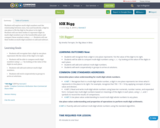
Students will explore multi-digit numbers and the relationship between ones, tens and hundreds; a digit in one place is 10x the digit in the place to its right. Students will use their bodies to represent digits in multi-digit numbers up to the hundredths place and compare these numbers using <, =, >. Students will use their bodies as multi-digit numbers to add and subtract.
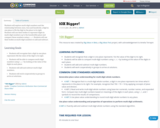
Students will explore multi-digit numbers and the relationship between ones, tens and hundreds; a digit in one place is 10x the digit in the place to its right. Students will use their bodies to represent digits in multi-digit numbers up to the hundredths place and compare these numbers using <, =, >. Students will use their bodies as multi-digit numbers to add and subtract.
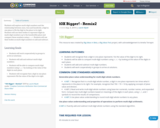
Students will explore multi-digit numbers and the relationship between ones, tens and hundreds; a digit in one place is 10x the digit in the place to its right. Students will use their bodies to represent digits in multi-digit numbers up to the hundredths place and compare these numbers using <, =, >. Students will use their bodies as multi-digit numbers to add and subtract.
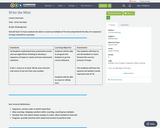
Title: 10 for the Win!Grade: Kindergarten Overall Goal: To have students be able to count by multiples of 10 and comprehend the idea of a sequence of steps involved in a process. StandardsLearning ObjectiveAssessment5d Students understand how automation works and use algorithmic thinking to develop a sequence of steps to create and test automated solutions. K.NS.1: Count to at least 100 by ones and tens and count on by one from any number.Students will be able to program the beebots to go the correct distance. Students will be able to count to 100 by tens.The students will have to use the beebots to move forward the correct amount of steps. The students will have the squares the beebot travels represent sets of 10. Key Terms & Definitions: Sequence- certain order in which steps flowSkip counting- skipping numbers while counting, counting by multiples Number line- line which shows number in order, often marked at intervalsProgram- provide machine with coded instructions to perform task Lesson Introduction (Hook, Grabber): 10 Students will paint hands and stamp them on paper! Each set of hands will represent a set of 10. We will do this all the way up to 100. This paper will be hung in the front of the classroom as a reminder of multiples of 10. Lesson Main:After hanging up our poster with the hands displaying multiples of 10, the teacher would count with the class by 10’s all the way up to 100, while referring to the poster so they can follow along.We will also pass out a number line to the students that highlights 10’s so they have a reference if they struggle.We will make a number line and write multiples of 10 along the side. We will measure out the space between numbers so that it is equal to the length the Beebot travels for each time the button is pushed. For example, if the student wanted to get to 30, they would have to know that you count up by saying “10, 20,30” and they would need to press the forward button on the Beebot 3 times. Each press of the button is a multiple of 10. For this activity, the teacher will break up the students into small groups and they will work together. They will draw a card which will have a multiple of 10 on it ranging from 10-100. The students will have to decide how many 10’s it takes to count up to that number, as well as how many times they will need to program the Beebot to reach the answer on the number line. Lesson Ending:For the lesson ending, we will regroup as a class and talk about how we felt the Beebot activity went. Then we will count together by 10’s up to 100 again to reiterate what we have been learning. Lastly, we will pass out a worksheet to the students which we have included a link to under our resources, and have them complete it individually. This will give us an idea of the students understanding of this concept and can be used for our assessment. Assessment Rubric: GreatAveragePoorIndicatorDescriptionDescriptionDescriptionHand Cut-outsStudent participated in the tracing and cutting out of hands.Student partially participated in the tracing and cutting out of hands.Student failed to participate in the tracing and cutting out of hands.Beebot activityStudent was able to successfully move the Beebot to correct answer.Student was able to move the Beebot, but not to the correct answer.Student was unable to move the Beebot and was unable to correctly answer.WorksheetStudent was able to correctly fill out the entire worksheet.Student was able to fill out 70% of the worksheet.Student was unable to fill out at least 70% of the worksheet. Resources / Artifacts: Number line for students https://www.helpingwithmath.com/printables/others/lin0301number11.htmWebsite which has handprint idea on it https://www.theclassroomkey.com/2016/02/big-list-skip-counting-activities.htmlLesson assessment used in the lesson ending https://www.pinterest.com/pin/287597126178910688 Differentiation: Differentiation for ability levelsIf a student really struggled with math skills, we could place them in a group with stronger math students. We could also offer an alternative activity for the Beebot timeline where we made the timeline go up by smaller multiples. For the worksheet, they could receive a longer amount of time to work on it and have directions read to them/receive help as needed. Differentiation for access & resourcesIf the school had limited resources and did not have access to these robots, they could use other tools like toy cars or something they could use to roll to the spots on the timeline. The game could be altered to fit a large variety of resources. The worksheet we used was found online but a similar version could be created by the teacher. Anticipated Difficulties: Some students might struggle with the concept of skip counting. It may be hard at first for them to remember the multiples of 10. Hopefully by making a poster and providing them with their own number line for reference, this will eliminate some potential difficulties the students may have.